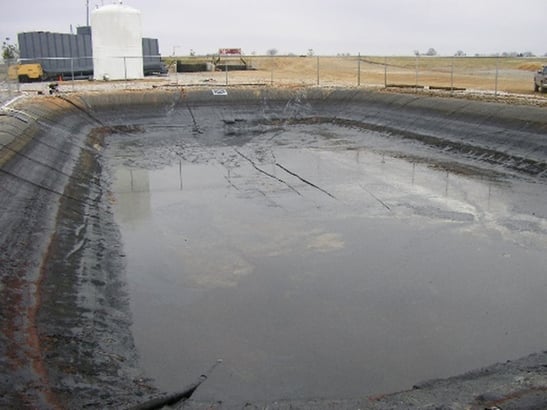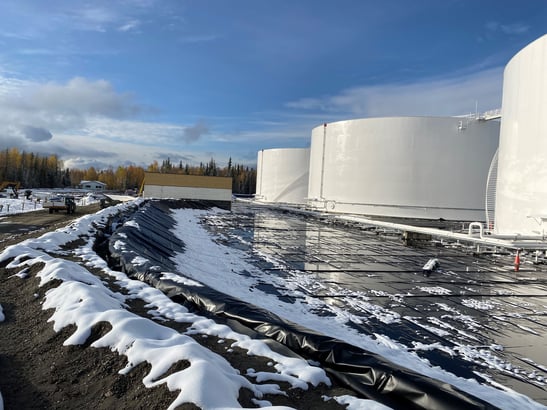Navigating Unexpected Contaminants with Your Geomembrane System
Part 1: What are the Concerns of Unexpected Contaminants
Geomembranes are long term containment barriers. As such, it is not uncommon for them to be called upon to contain liquids not originally planned. That is particularly true in applications which are more likely to produce changing or varying liquid containment requirements. This blog series will dig into how unexpected contaminants can be a concern with a geomembrane system and, how to evaluate stability and accommodate the changes.
Changes in liquid content can occur due to:
- Changes in treatment process
- New information on the source itself
- Accidental spills
- Changes in batch processing sequence
- New or modified processes
Surface water, groundwater, industrial wastewater, municipal wastewater, oil and gas exploration byproducts, etc. can all change. Often, changes are the result of process conditions which are required by the generator/owner and not indicative of process or operational error. Should you be worried about the geomembrane system you selected and designed for the application?
 XR-5 Geomembrane lined Mixed waste Impoundment
XR-5 Geomembrane lined Mixed waste Impoundment
Kentucky, USA
What about pure liquids? Note that not only can the content of pure liquids change, but the product itself can be replaced with a different, or another, similar liquid. This situation is most likely to occur with secondary containment. Secondary containment systems are often designed and built with capacity and layout for additional, possible, future added tankage. The owner of the facility may intend that the new storage volume contain a product different than currently stored in what will be a common, lined containment area. An example is the changing content of stored motor fuels to meet upgraded air quality regulations. Some additives result in higher permeabilities in some geomembranes. The existing geomembrane in the containment area may or may not be compatible with this new stored liquid. Often, stored (and potentially released) products in a common secondary containment area are compatible with each other. Otherwise, potentially dangerous reactions could occur if mixed. As an example, hydrocarbons and acids would not be placed in a common containment area. Jet fuel and diesel would.

XR-5 geomembrane lined jet fuel secondary containment
Alaska USA
Photo courtesy of Latitude 63
Are there other situations? Because geomembranes are fluid barriers, and specifically used as floating or fixed covers to contain gases, those also can change. Specifically, if the composition of a liquid changes, vapors from the liquid itself, or from byproducts of a treatment process, either natural or designed, can change.
If done correctly in the initial evaluation stage, the geomembrane properties are thoroughly evaluated. Chemical resistance is one of the most important properties of a geomembrane. Field in-situ testing for compatibility is the best way to confirm long term resistance to the liquids to be contained. The overall message is that liquids contained by geomembranes are often heterogeneous and can be variable and changing. Every change should not trigger a replacement of the geomembrane if the proper geomembrane has been utilized and proper engineering controls are employed.
Part 2 of this series will focus on methods to ensure your existing geomembrane will adequately handle unexpected changes in chemical content of contained liquids.



